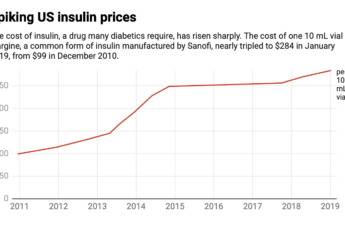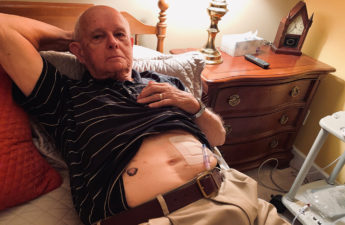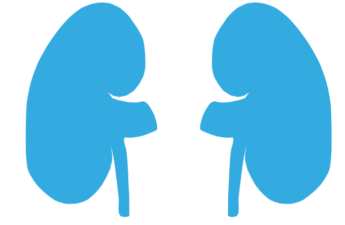Category: Dialysis
Prescriptions for fruits and vegetables can improve the health of people with diabetes and other ailments, new study finds
Patients’ blood sugar levels, blood pressure and weight improved.
Eli Lilly is cutting insulin prices and capping copays at $35 – 5 questions answered
High insulin prices have not earned any U.S. manufacturer many friends, with list prices increasing 54% from 2014 to 2019. Most troublingly, an estimated 1.3 million uninsured people with diabetes and patients with inadequate insurance have resorted to rationing their insulin. Skipping doses because of high insulin prices has sometimes had tragic and even deadly consequences.But growing competition has shaken up the insulin market in recent years.
Sitting all day is terrible for your health – now, a new study finds a relatively easy way to counteract it
To reduce the harmful health effects of sitting, take a five-minute light walk every half-hour. We found that a five-minute light walk every half-hour was the only strategy that reduced blood sugar levels substantially compared with sitting all day. In particular, five-minute walks every half-hour reduced the blood sugar spike after eating by almost 60%. That strategy reduced blood pressure by four to five points compared with sitting all day. But shorter and less frequent walks improved blood pressure too. Even just a one-minute light walk every hour reduced blood pressure by five points.
Future Surge in Diabetes Could Dramatically Impact People Under 20 in U.S.
This expected upward trend may lead to as many as 220,000 young people having type 2 diabetes in 2060 —a nearly 700% increaseand the number of young people with type 1 diabetes could increase by as much as 65% in the next 40 years. Even if the rate of new diabetes diagnoses among young people remains the same over the decades, type 2 diabetes diagnoses could increase nearly 70% and type 1 diabetes diagnoses could increase 3% by 2060.
Why South Asians are at increased risk for diabetes: A complex interplay of genetics, diet and history
South Asians are particularly insulin resistant. Compared to Caucasians, South Asians had higher insulin concentrations in their blood after ingesting sugar. This means that South Asian individuals require more insulin to regulate their blood sugar levels, a characteristic of Type 2 diabetes. There are numerous possible explanations for this, but genetic variants could be one culprit.
Nonprofit drugmaker Civica Rx is taking aim at the high insulin prices harming people with diabetes
Civica Rx, a non-profit that manufactures generic drugs, is planning to produce generic insulin for a price of no more than $30 for a month.
Looking at our early human ancestors for insights into modern diseases
Our ancestors’ environment and diets, and the limits of our biology, have led to adaptations that have improved human survival through natural selection. But we remain prone to illness and disease anyway.
Dialysis Industry Spends Big To Protect Profits
In California, the dialysis industry spent about $2.5 million on lobbying and campaign contributions in the first half of this year in its ongoing battle to thwart regulation.
What The Trump Home Dialysis Plan Would Really Look Like
Home dialysis isn’t right for everyone. Seniors with bad eyesight, poor fine-motor coordination, or cognitive impairment generally can’t undertake this therapy.
Using Obamacare Authority, Trump Aims To Shift Dialysis Care To Patients’ Homes
The initiative aims to increase the number of patients getting dialysis at home and double the annual number of kidneys available for transplants.
Ballot initiative seeks to limit dialysis centers’ profits
The question is whether a California ballot initiative to limit the profit of dialysis clinics will protect lives or end them.








